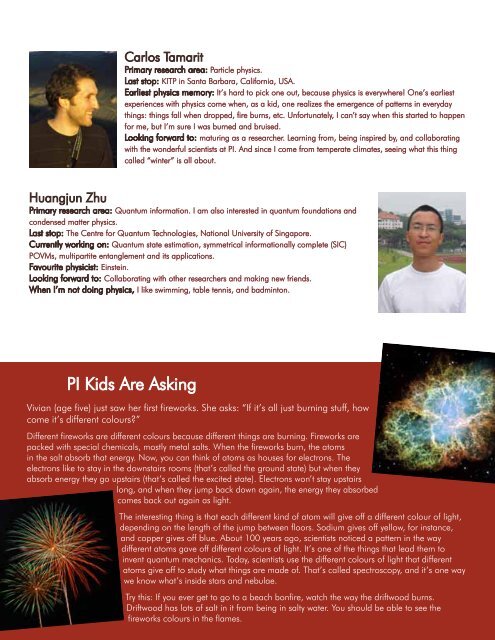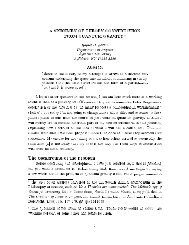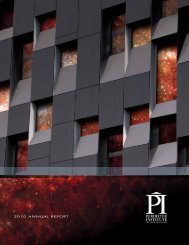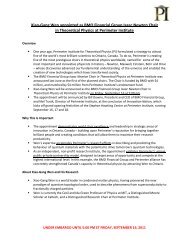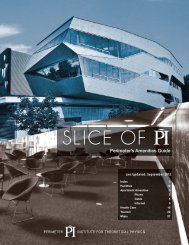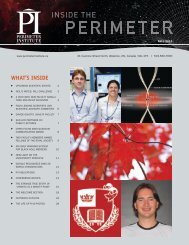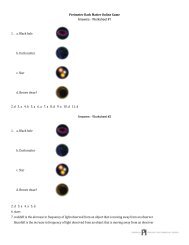i n s i d e - Perimeter Institute
i n s i d e - Perimeter Institute
i n s i d e - Perimeter Institute
You also want an ePaper? Increase the reach of your titles
YUMPU automatically turns print PDFs into web optimized ePapers that Google loves.
Carlos TamaritPrimary research area: Particle physics.Last stop: KITP in Santa Barbara, California, USA.Earliest physics memory: It’s hard to pick one out, because physics is everywhere! One’s earliestexperiences with physics come when, as a kid, one realizes the emergence of patterns in everydaythings: things fall when dropped, fire burns, etc. Unfortunately, I can’t say when this started to happenfor me, but I’m sure I was burned and bruised.Looking forward to: maturing as a researcher. Learning from, being inspired by, and collaboratingwith the wonderful scientists at PI. And since I come from temperate climates, seeing what this thingcalled “winter” is all about.Huangjun ZhuPrimary research area: Quantum information. I am also interested in quantum foundations andcondensed matter physics.Last stop: The Centre for Quantum Technologies, National University of Singapore.Currently working on: Quantum state estimation, symmetrical informationally complete (SIC)POVMs, multipartite entanglement and its applications.Favourite physicist: Einstein.Looking forward to: Collaborating with other researchers and making new friends.When I’m not doing physics, I like swimming, table tennis, and badminton.PI Kids Are AskingVivian (age five) just saw her first fireworks. She asks: “If it’s all just burning stuff, howcome it’s different colours?”Different fireworks are different colours because different things are burning. Fireworks arepacked with special chemicals, mostly metal salts. When the fireworks burn, the atomsin the salt absorb that energy. Now, you can think of atoms as houses for electrons. Theelectrons like to stay in the downstairs rooms (that’s called the ground state) but when theyabsorb energy they go upstairs (that’s called the excited state). Electrons won’t stay upstairslong, and when they jump back down again, the energy they absorbedcomes back out again as light.The interesting thing is that each different kind of atom will give off a different colour of light,depending on the length of the jump between floors. Sodium gives off yellow, for instance,and copper gives off blue. About 100 years ago, scientists noticed a pattern in the waydifferent atoms gave off different colours of light. It’s one of the things that lead them toinvent quantum mechanics. Today, scientists use the different colours of light that differentatoms give off to study what things are made of. That’s called spectroscopy, and it’s one waywe know what’s inside stars and nebulae.Try this: If you ever get to go to a beach bonfire, watch the way the driftwood burns.Driftwood has lots of salt in it from being in salty water. You should be able to see thefireworks colours in the flames.fall 2011 17


